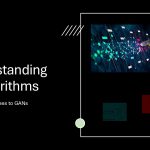In today’s fast-paced digital world, accessibility for people with disabilities has become a crucial aspect of technology development. Artificial Intelligence (AI) is at the forefront of this transformation, providing innovative solutions that empower individuals with disabilities to navigate the digital landscape more effectively. This article explores how AI is enhancing accessibility, the technologies involved, and the broader implications for society.
The Importance of Accessibility
Accessibility ensures that all individuals, regardless of their physical or cognitive abilities, can access information and services. It is essential for:
- Promoting equality and inclusion
- Enhancing user experiences
- Complying with legal standards and regulations
AI plays a pivotal role in advancing accessibility by providing tailored solutions that address diverse needs, thus fostering an inclusive environment for everyone.
AI-Powered Assistive Technologies
Several AI-powered technologies are making significant strides in improving accessibility for people with disabilities. Here are some notable examples:
- Speech Recognition: AI-driven speech recognition systems enable individuals with mobility impairments to control devices using voice commands. Applications like
Google AssistantandAmazon Alexademonstrate how voice-activated technology can create hands-free environments. - Text-to-Speech (TTS) and Speech-to-Text (STT): These technologies assist individuals with visual impairments or learning disabilities by reading text aloud or converting spoken language into text. Tools such as
Microsoft's Immersive ReaderandNatural Readerexemplify these capabilities. - Computer Vision: AI algorithms can analyze visual data and provide context to users with visual impairments. For instance, applications like
Be My Eyesconnect blind users with sighted volunteers for real-time assistance in navigating their environment. - Predictive Text and Autocomplete: AI-driven software can enhance communication for individuals with cognitive disabilities by predicting what they want to say, making typing easier and faster. Tools such as
Gboardprovide these features to simplify the writing process. - Personalized Learning: AI technologies can adapt educational materials to suit the needs of students with disabilities. Platforms like
DreamBox Learningutilize AI to modify instructional content based on individual learning paces and styles.
Benefits of AI in Accessibility
The integration of AI into accessibility solutions offers numerous benefits, including:
- Enhanced Independence: AI tools enable individuals with disabilities to perform tasks independently, reducing reliance on caregivers and promoting self-sufficiency.
- Increased Productivity: By streamlining processes and providing tailored support, AI enhances productivity for users with disabilities, allowing them to engage fully in various activities.
- Broader Participation: Improved accessibility through AI fosters participation in education, employment, and social activities, ultimately leading to a more inclusive society.
Challenges and Considerations
While AI significantly contributes to enhancing accessibility, several challenges remain:
- Data Privacy: Ensuring the privacy and security of user data is paramount, especially for sensitive information related to disabilities.
- Bias in AI: AI systems can perpetuate biases if not adequately trained on diverse datasets, potentially leading to ineffective solutions for underserved communities.
- Cost of Implementation: Developing and deploying AI-driven accessibility solutions can be costly, posing challenges for smaller organizations and startups.
The Future of AI in Accessibility
The potential of AI to improve accessibility is vast. As technology continues to evolve, advancements in machine learning, natural language processing, and computer vision promise even more innovative solutions. Future developments could include:
- More sophisticated voice recognition that understands varied accents and dialects.
- AI-driven applications that can interpret emotions and provide tailored responses for mental health support.
- Greater integration of AI with everyday devices, making accessibility features ubiquitous in all technology.
Conclusion
Artificial Intelligence is revolutionizing the way we think about accessibility for people with disabilities. By harnessing the power of AI, we can create a more inclusive digital world that empowers individuals to live their lives to the fullest. While challenges remain, the continuous innovation in AI technologies holds the promise of breaking down barriers and ensuring that everyone has equal access to information, services, and opportunities.


